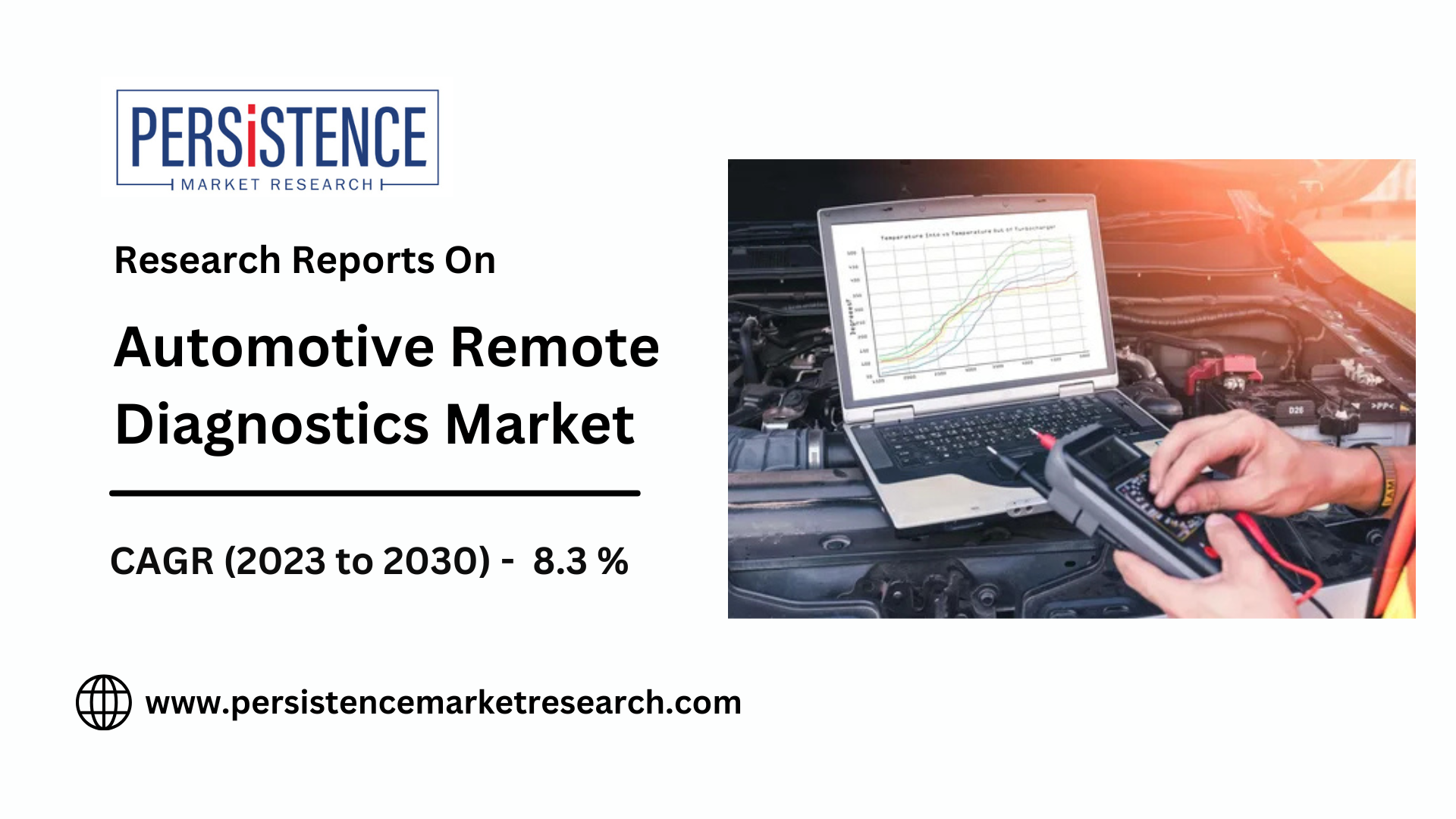Key Drivers of the Automotive Remote Diagnostics Market Boom

Strong 8k brings an ultra-HD IPTV experience to your living room and your pocket.
The global automotive remote diagnostics market is projected to grow significantly, expanding from US$12.4 billion in 2023 to US$36.1 billion by 2030, at a compound annual growth rate (CAGR) of 16.5%. This growth is driven by the increasing complexity of modern vehicles, which require advanced diagnostic solutions to manage intricate electronic components and interconnected systems. The rising emphasis on preventive maintenance and the integration of Internet of Things (IoT) technologies in vehicles further accelerate the market’s expansion. Automotive remote diagnostics enables real-time data transmission, allowing for proactive issue resolution and enhanced vehicle performance.
The automotive industry is on the cusp of a major transformation, largely driven by advancements in digital technology. Among the innovations leading the way is automotive remote diagnostics, a system that allows vehicles to be monitored and diagnosed in real-time from a distance. This technology has become a game-changer for vehicle owners, fleet managers, and service providers, offering cost-saving opportunities and improving vehicle performance management. The global market for automotive remote diagnostics is projected to experience rapid growth, and several key drivers are propelling this boom. Below are the primary factors fueling the expansion of this market.
1. Rising Demand for Vehicle Connectivity
As vehicles become increasingly connected, the demand for remote diagnostics systems is growing. Today’s vehicles come equipped with sophisticated telematics systems, allowing them to communicate with external platforms for data transmission and real-time monitoring. This connectivity not only helps with navigation and infotainment but also supports diagnostic functions.
Modern vehicles are packed with multiple sensors that track vital systems, such as the engine, battery, and emissions systems. By tapping into this data, remote diagnostic systems can continuously monitor the vehicle’s health and performance. For fleet operators and individual vehicle owners alike, this connectivity offers peace of mind, as they can monitor their vehicles’ status in real-time and take preemptive action if issues arise.
2. The Shift Towards Predictive Maintenance
Traditionally, vehicle maintenance was reactive, meaning repairs were often only made when problems became apparent, leading to unexpected downtimes and costly repairs. However, with the advent of predictive maintenance, this model is shifting. Automotive remote diagnostics allows for constant monitoring of a vehicle’s health, identifying potential issues before they result in serious malfunctions.
Predictive maintenance is becoming increasingly popular due to its ability to reduce repair costs and improve vehicle uptime. This approach is especially valuable for fleet managers, as it enables them to maintain a higher level of operational efficiency and minimize downtime. By detecting issues early, predictive maintenance helps prevent costly repairs and keeps vehicles running at their optimal performance level.
3. Technological Advancements in Telematics and IoT
Telematics and Internet of Things (IoT) technologies are at the core of automotive remote diagnostics. The use of sensors, onboard diagnostics (OBD) systems, and IoT-enabled devices is transforming the way vehicles are monitored and maintained. Telematics systems that collect data from vehicles and relay it to cloud-based platforms are becoming more advanced, enabling real-time analysis of critical vehicle parameters.
IoT devices provide granular insights into various aspects of vehicle performance, such as tire pressure, brake system health, battery status, and engine performance. These technological advancements not only improve the accuracy of remote diagnostics but also make it easier for fleet managers and service providers to address issues proactively and in a timely manner.
4. The Increasing Complexity of Modern Vehicles
As vehicles become more advanced, the need for comprehensive diagnostic systems has become more critical. Modern cars, especially electric vehicles (EVs) and hybrid models, are equipped with complex powertrains, sensors, and intelligent systems. These systems require continuous monitoring to ensure optimal performance and prevent malfunctions.
For example, the intricate battery management systems in EVs require specialized diagnostics to ensure the battery's health and efficiency. Similarly, the advanced driver-assistance systems (ADAS) in modern vehicles demand precise and consistent monitoring. Automotive remote diagnostics can handle these complexities by providing real-time data on all vehicle systems, making it easier to address issues that may not be immediately apparent to drivers or technicians.
5. Regulatory Compliance and Safety Standards
As regulatory standards for vehicle safety and emissions become more stringent, automotive remote diagnostics is emerging as a crucial tool for ensuring compliance. Governments around the world are introducing tighter regulations to reduce carbon emissions and enhance vehicle safety. Remote diagnostics systems help monitor emissions controls and engine performance to ensure vehicles adhere to these standards.
For fleet operators, this technology ensures that their vehicles remain compliant with regional and international regulations, preventing costly fines and operational disruptions. Additionally, by monitoring safety systems, such as airbags and stability control, remote diagnostics can alert drivers and fleet managers to potential issues that could compromise vehicle safety.
6. The Rise of Electric Vehicles (EVs)
The rapid growth of the electric vehicle (EV) market is another key driver for automotive remote diagnostics. Unlike traditional internal combustion engine (ICE) vehicles, EVs rely heavily on their battery systems and powertrains, which require constant monitoring to ensure they operate efficiently. Remote diagnostics is particularly useful for monitoring the health of EV batteries, providing data on charge levels, battery health, and performance.
As the adoption of EVs continues to increase, the demand for advanced diagnostic systems to monitor their unique components is also expected to rise. In addition, as EVs become more mainstream, remote diagnostics systems can help optimize battery life, reduce energy consumption, and enhance the overall user experience.
7. Consumer Demand for Improved Convenience and Cost Efficiency
Consumers are becoming increasingly aware of the benefits of remote diagnostics. With the convenience of being able to monitor a vehicle’s health from anywhere, owners can avoid unexpected repair costs and reduce the frequency of in-person service visits. As vehicles become more expensive to maintain and repair, consumers are eager to take advantage of tools that help them save time and money.
For fleet owners, the cost benefits of remote diagnostics are even more pronounced. By utilizing data to schedule preventive maintenance and minimize downtime, fleet operators can optimize the use of their vehicles, reducing overall operating costs. This is particularly relevant in industries that rely on fleets for business operations, such as logistics, delivery services, and public transportation.
8. Integration with Advanced Driver-Assistance Systems (ADAS)
ADAS technologies are becoming standard in modern vehicles, offering features like lane-keeping assist, adaptive cruise control, and automatic emergency braking. However, these advanced systems require continuous monitoring and diagnostics to ensure they operate as intended.
Automotive remote diagnostics helps keep ADAS systems in check by alerting drivers and service providers to any malfunctions. For example, if a sensor fails or calibration is needed, the system can flag the issue, ensuring that the ADAS remains fully functional and reliable. As ADAS becomes more prevalent, the demand for diagnostic systems that can monitor these advanced technologies will continue to grow.
9. Market Growth of Fleet Management Solutions
Fleet management is one of the key sectors driving the adoption of automotive remote diagnostics. As businesses continue to rely on fleets of vehicles, the ability to manage and monitor these fleets remotely becomes increasingly valuable. Fleet management solutions are being integrated with remote diagnostics platforms, enabling managers to track vehicle health, monitor fuel efficiency, and predict maintenance needs.
These solutions provide a comprehensive view of fleet operations, allowing managers to make data-driven decisions about vehicle replacement, repair, and maintenance schedules. The growing adoption of fleet management solutions is expected to significantly drive the demand for remote diagnostics systems.
Conclusion
The automotive remote diagnostics market is booming, thanks to a combination of rising demand for connectivity, advances in telematics and IoT, and the increasing complexity of modern vehicles. As consumers and fleet managers seek ways to reduce maintenance costs, improve vehicle efficiency, and stay compliant with safety regulations, remote diagnostics is proving to be an indispensable tool in the automotive industry.
The growing popularity of electric vehicles, the shift to predictive maintenance, and the integration of ADAS technologies are all contributing to the market’s expansion. With further technological advancements on the horizon, automotive remote diagnostics will continue to play a pivotal role in the future of the automotive sector, offering significant benefits to vehicle owners, fleet operators, and service providers alike.
Note: IndiBlogHub features both user-submitted and editorial content. We do not verify third-party contributions. Read our Disclaimer and Privacy Policyfor details.







